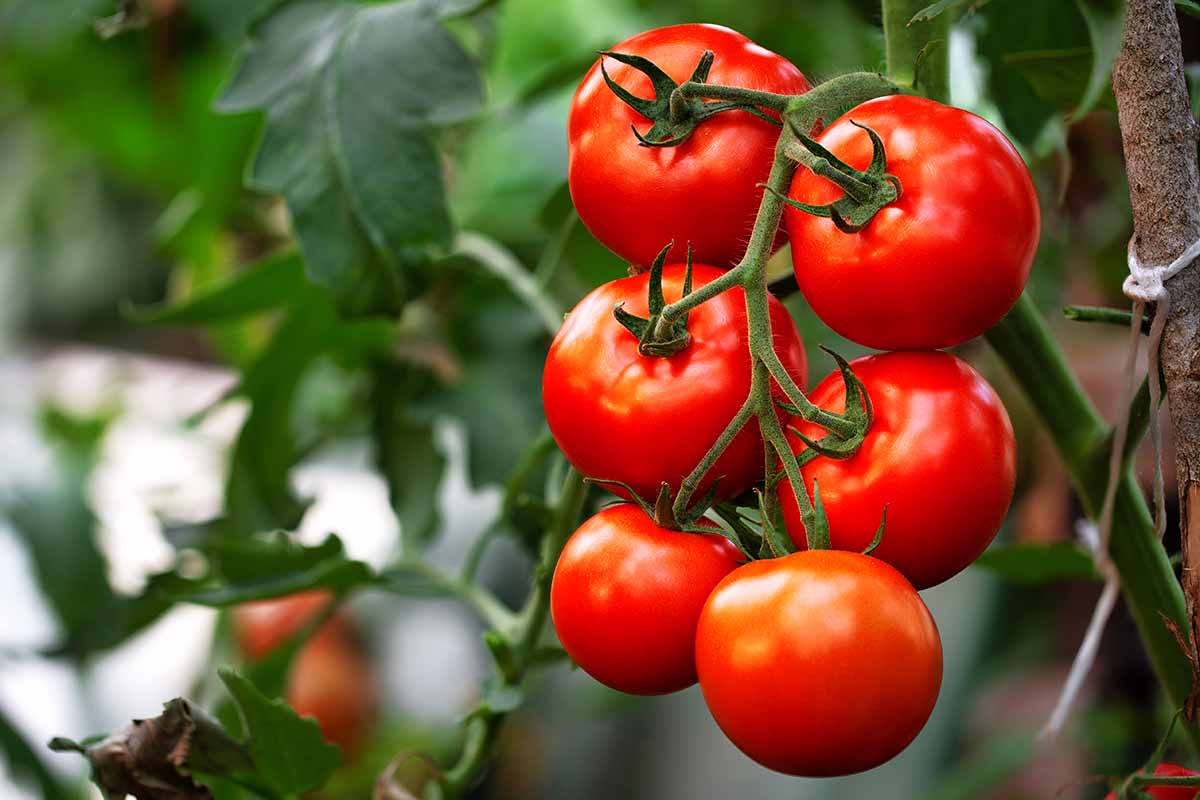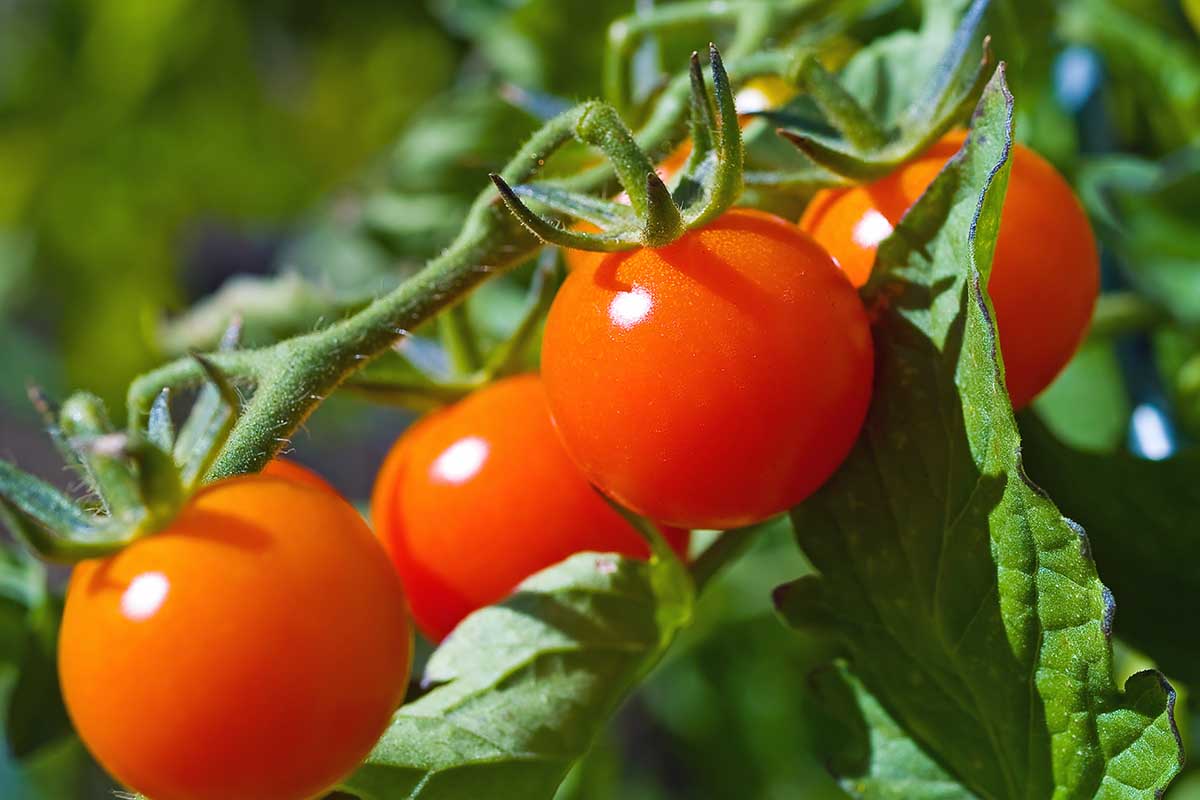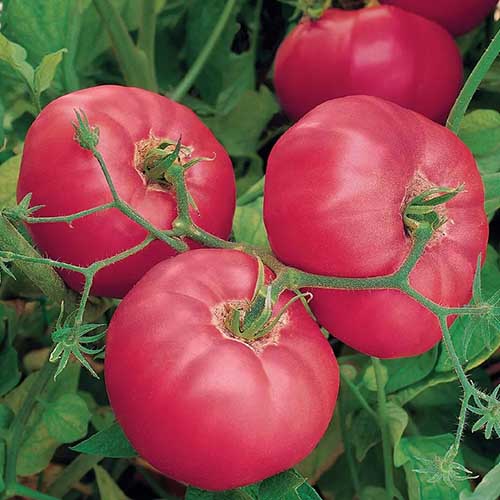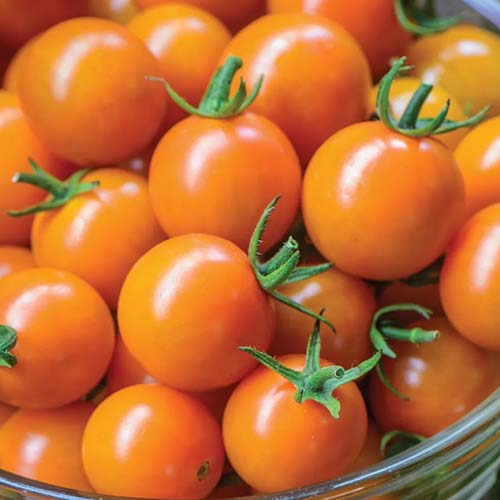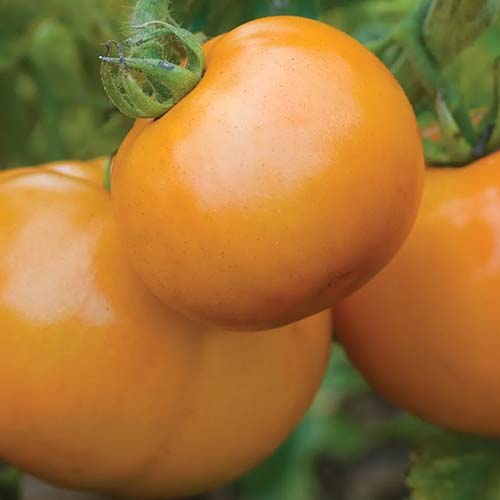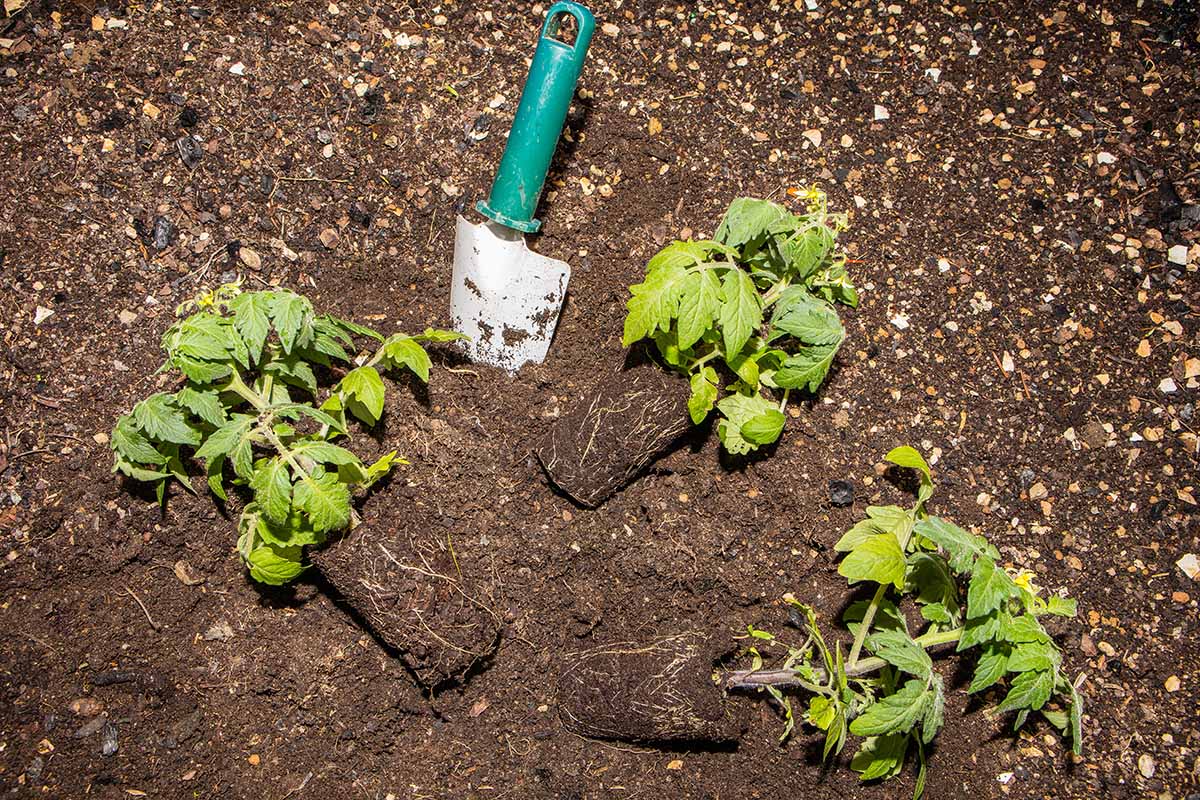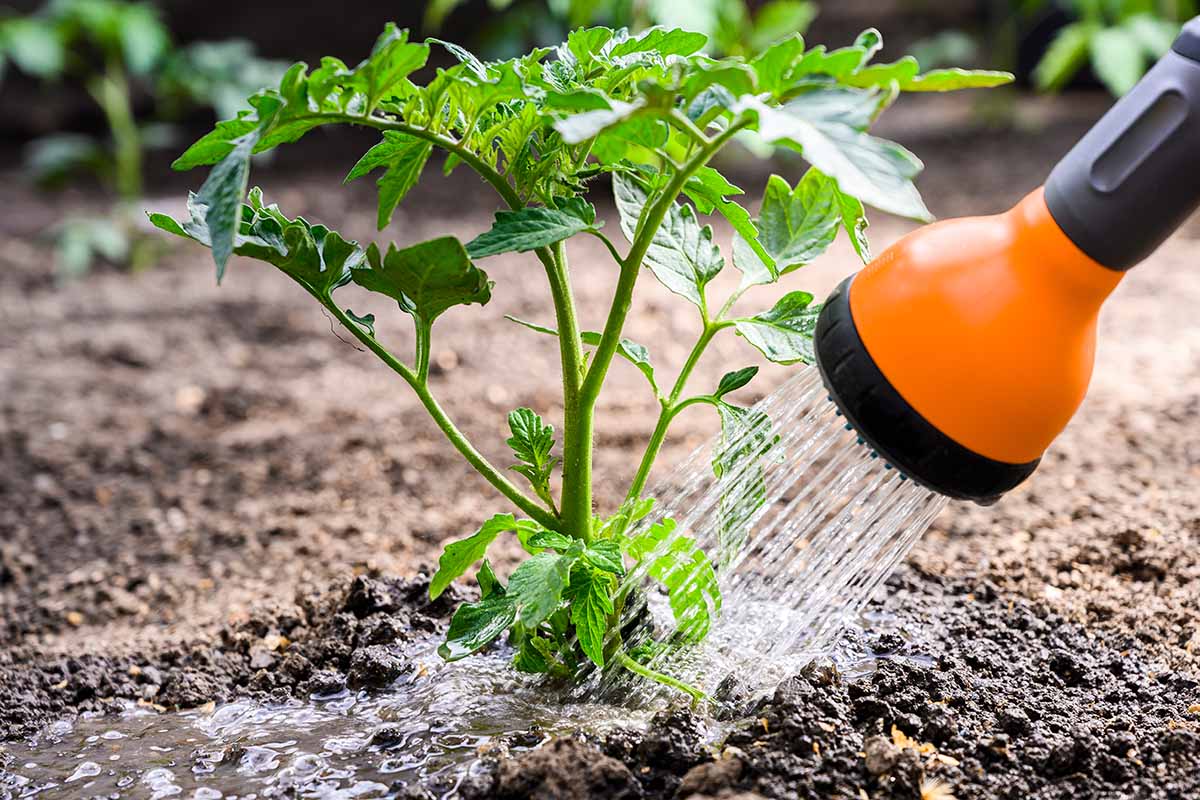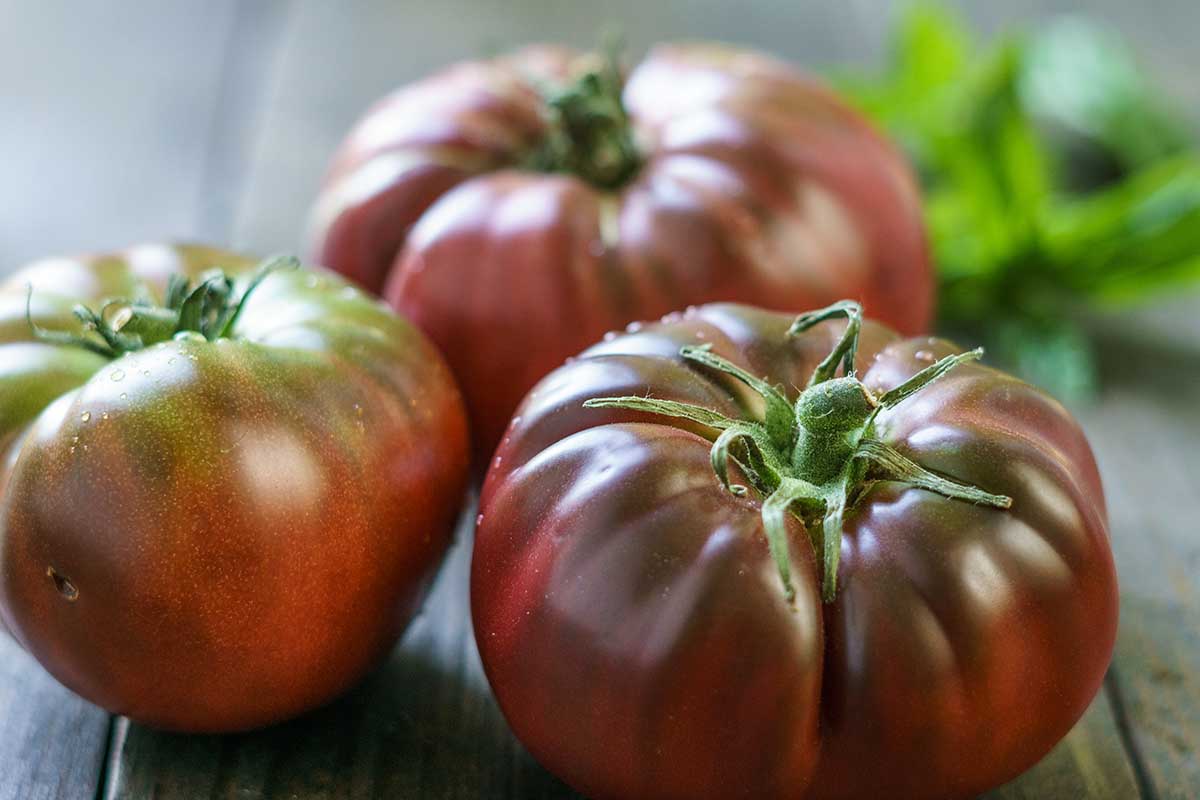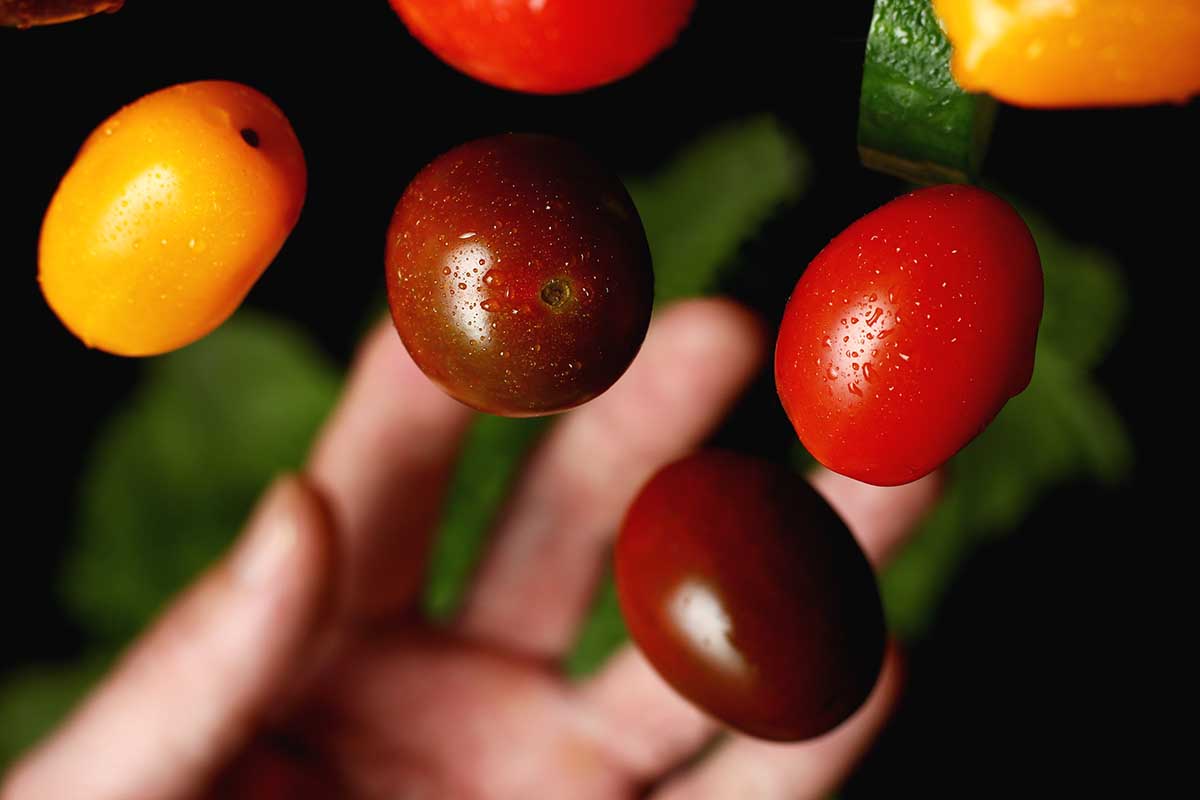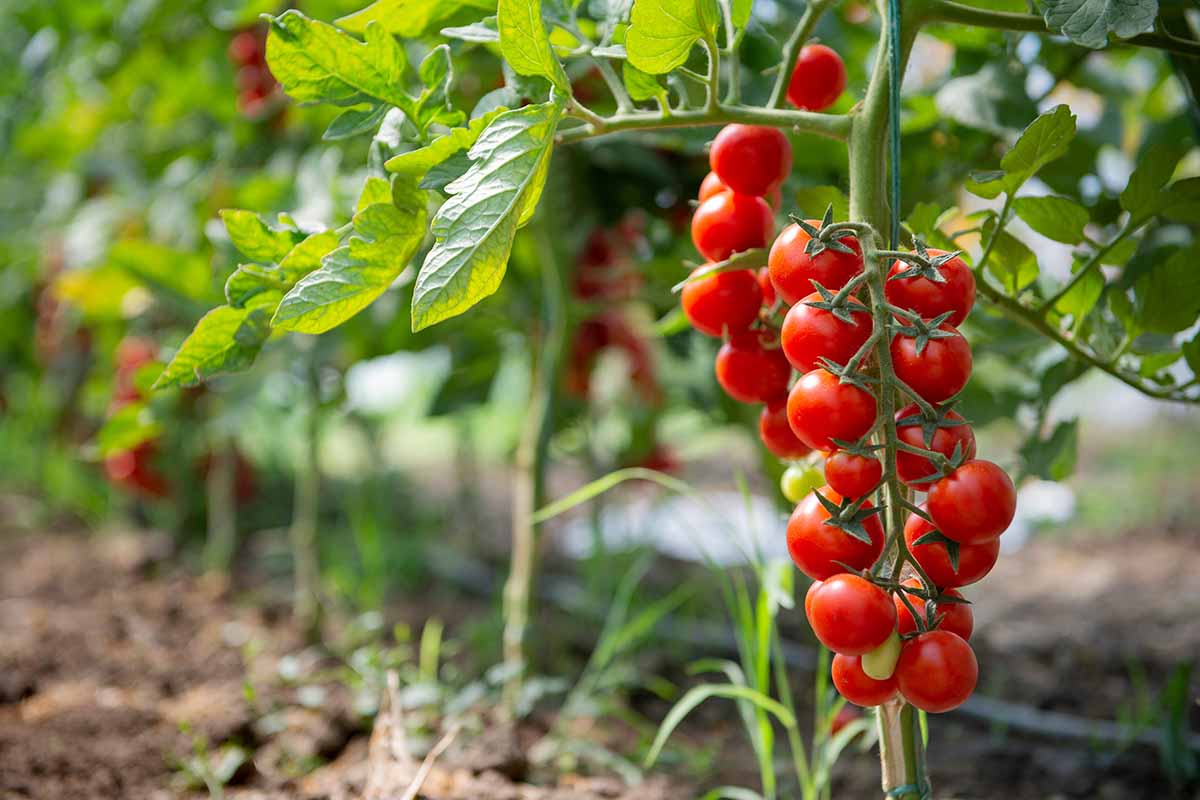Numerous varieties are able to claim the nickname “garden candy.” They’re naturally full of healthy vitamins and minerals, too. We link to vendors to help you find relevant products. If you buy from one of our links, we may earn a commission. That’s what we’re going to discuss here: ways to grow the sweetest-tasting tomatoes, from selecting the best varieties to creating the best growing conditions. Here’s what I’ll cover:
What Is the Brix Scale?
The Brix scale measures a fruit’s total soluble solids, mostly sugars including monosaccharides, sucrose, and fructose. The higher the number on the Brix scale, the more likely it is that the fruit of a particular variety will taste sweet. Different types of tomatoes and even individual cultivars may be assigned a number within a range on the Brix scale. Commercial growers also test their ripening fruit to determine its sweetness using the Brix scale as a quantifier. In general, cherry types have the highest Brix content, with some of those with the highest potential sugar content having Brix scale numbers from 8 to 9. When you’re growing your own in the summer vegetable garden though, it’s important to remember that the Brix number for a specific variety only defines its potential sweetness. This is only a starting point, and many other factors will also contribute to the sweetness – or lack thereof – in ripe fruits. We’ll talk about those variables in a minute, but first I want to share three particularly sweet varieties that you might like to add to your garden.
3 Varieties Bred to Be Sweet
While you may fondly remember the sweet varieties with “real tomato flavor” from summers in your childhood, small-fruit hybrids bred in more recent years are the ones that tend to have the highest potential sugar content. Of course, if you’ve ever bitten into a sour, tough “heirloom” cherry tomato sold in mid-winter at the artisanal grocery or wholesale club, you already know that not all small tomatoes are sweet. Often, the traits that make a tomato easy to ship and able to stay fresh on the shelf for a good while will undermine the flavor, particularly the sweetness. Here are three varieties known for producing fruits with high sugar content. While choosing these won’t guarantee sweet success on its own, picking the sweetest cultivars is a good place to start.
Soil
There’s no magic involved in preparing the soil to grow the sweetest tomatoes, only straightforward garden soil preparation. The ‘Brandy Boy’ hybrid keeps that classic ‘Brandywine’ flavor profile but adds higher yields and more disease resistance to the package. Determinate ‘Brandy Boy’ vines reach about six feet tall and need support. The uniform, deep-pink fruits ripen evenly and weigh 14 ounces apiece. ‘Brandy Boy’ This is a beefsteak variety so the fruit won’t taste candy-sweet, but they are delectably sugary, with firm flesh and tender skins. ‘Brandy Boy’ is available in 35- or 100-seed packets, or mix-and-match live plant bundles, from Burpee.
Honeycomb
These vines yield masses of dark gold “candy” fruits weighing about one ounce each, and they’re ready to harvest starting 75 to 80 days from transplant. ‘Honeycomb’ The golden color is appealing in fresh salsa, but most of these sweeties will go straight into your mouth. ‘Honeycomb’ seeds are available in packets of 30 and in Mix and Match plant bundles from Burpee.
Sweet Tangerine
Another hybrid that proves larger tomatoes can be sweet, too, ‘Tangerine’ is a bush variety. It grows just 36 to 40 inches tall and bears fruit over a short period, which is ideal for short-season growers and those looking to preserve their produce as sauce or salsa to waterbath can or freeze. ‘Sweet Tangerine’ The plants produce a harvest about 68 days from transplant. ‘Sweet Tangerine’ is available in 30-seed packets from Burpee.
Ways to Grow Sweeter Tomatoes
You may have noticed that even the fruits from varieties with names like ‘Supersweet 100’ vary in their sugary taste at harvest time. They may also taste less sweet from one year to the next, when picked at different points in the season, or when grown back where you used to live compared to now. All of that points to one trait common to all tomatoes: The taste of the fruit is dependent not just on the parent plant, but on where and how you grow your plants. Want to increase the sugary flavor? Here are four tactics to try: Please don’t try to increase the sugar content of cherry tomatoes by adding table sugar to the planting holes. That won’t improve the soil or sweeten the fruits. And while it will break down into compost, that’s a pretty expensive way to provide nutrition to the soil. What does help to produce tomatoes with the most concentrated sweet taste? Transplanting into soil that’s been amended with plenty of rich organic matter and that’s well-draining. This provides the nutrition the plant needs to grow a strong root system and produce fruits. The pH is also important to the overall health and productivity of the plant. These plants thrive in slightly acidic soil with a pH between 6.0 and 6.8. A soil test ahead of planting can determine if your planting medium is within this range. If you’ll need to amend to make the soil more alkaline or acidic, note that the breakdown of anything you add to the soil can take a while. In other words, if you’re planning to use additives like wood ash, Epsom salts, or aluminum sulfate, try to do it the season before you plant tomatoes in that area.
Water
There are three aspects of watering that can impact how sweet the harvest is. First, throughout the early parts of the growing season, your vines or bushes will need ample water. If the rain isn’t providing at least an inch of water per week in warm weather, be sure to supplement with weekly watering. Favor once- or twice-weekly deep watering over light watering from the spout of a watering can. Insufficient hydration can encourage shallow roots as they grow towards the soil surface in search of water, while shallow top-watering can promote disease. Next, make sure not to overwater. If you (or the weather conditions) provide too much water for the plants, it can wash out the available nutrients in the soil, which tomatoes need to produce flavorful fruits. According to retired University of Florida horticultural professor Harry Klee, too much water can dilute the flavor of any tomato, not just sweet ones. Finally, once the plants set fruit, cut back on watering. This will help to prevent cracking in the ripening fruits and will also reduce the amount of water within the fruits for a more concentrated, sweet flavor.
Pruning
Especially if you’re growing indeterminate vines, pinching off some of the side shoots before the plants begin flowering can produce healthier plants, and helps the vines to expend more energy on producing flavorful fruits versus more foliage. Of course, this extra flavor comes at the expense of potentially producing fewer fruits, so it’s up to you. Learn more about when and how to pinch the vines in our guide to making green tomatoes turn red.
Harvesting
To enjoy the full, sweet, garden candy flavor, it’s important to harvest at the peak of ripeness. You’ll do best if you plan this harvest from the start, accounting for the number of “days to maturity” before you choose a cultivar to transplant. Use your garden journal or calendar to note when you expect to be harvesting. Also, pay close attention to the vines in the days and weeks leading up to possible harvest, so you don’t miss the window of opportunity. To retain the flavor of the fruits that ripen later, pick regularly. This encourages the plant to keep producing new, healthy fruits instead of putting energy into seed development in the tomatoes that are left to overripen on the vine. Learn more about when and how to harvest in our guide to storing tomatoes. There’s another reason why it’s really important to choose a cultivar that grows well in your area and that will have plenty of time to produce an ample crop before chilly weather arrives. The most popular sweet tomatoes – the cherry, grape, and currant varieties – are unlikely to ripen indoors. If they’re still green and frost is predicted, you can make them into green pickles, but you can’t expect them to turn red once they’re plucked from the vine. Along with these positive suggestions, I’d like to mention one of the most prominent bits of gardening wisdom making the rounds that does not work to sweeten tomatoes. Do not try the old-timey method of adding baking soda to the soil. The reason this won’t work is multifold, but chiefly, while baking soda would make the soil more alkaline, that won’t affect the acidity of the fruits. At the same time, you’d have to add so much baking soda to the soil to make the pH change that it could prove toxic to the plants. Sugary cherry tomatoes play a valuable role in this endeavor. Not only do the vines and bushes produce a bounty of fresh snacks throughout the harvest season, they also provide a prime ingredient for simple side dishes, salads, and fresh and freezer salsa and sauce. I can also savor the sweet taste without worrying about consuming the empty calories that foods with added sugar so often contain. Are you also trying to add sweetness to your homegrown tomatoes, whether full-size or tiny? Feel free to add any insights or questions you have in the comments section, so all of us gardeners can benefit from your experience. And if you’re intrigued by the idea of growing and caring for the most flavorful tomatoes, check out these guides next:
17 of the Best Cherry Tomatoes to Plant in Your Garden21 of the Best Heirloom Tomato Varieties for the Garden23 of the Best Slicing Tomatoes to Grow in Your Garden

